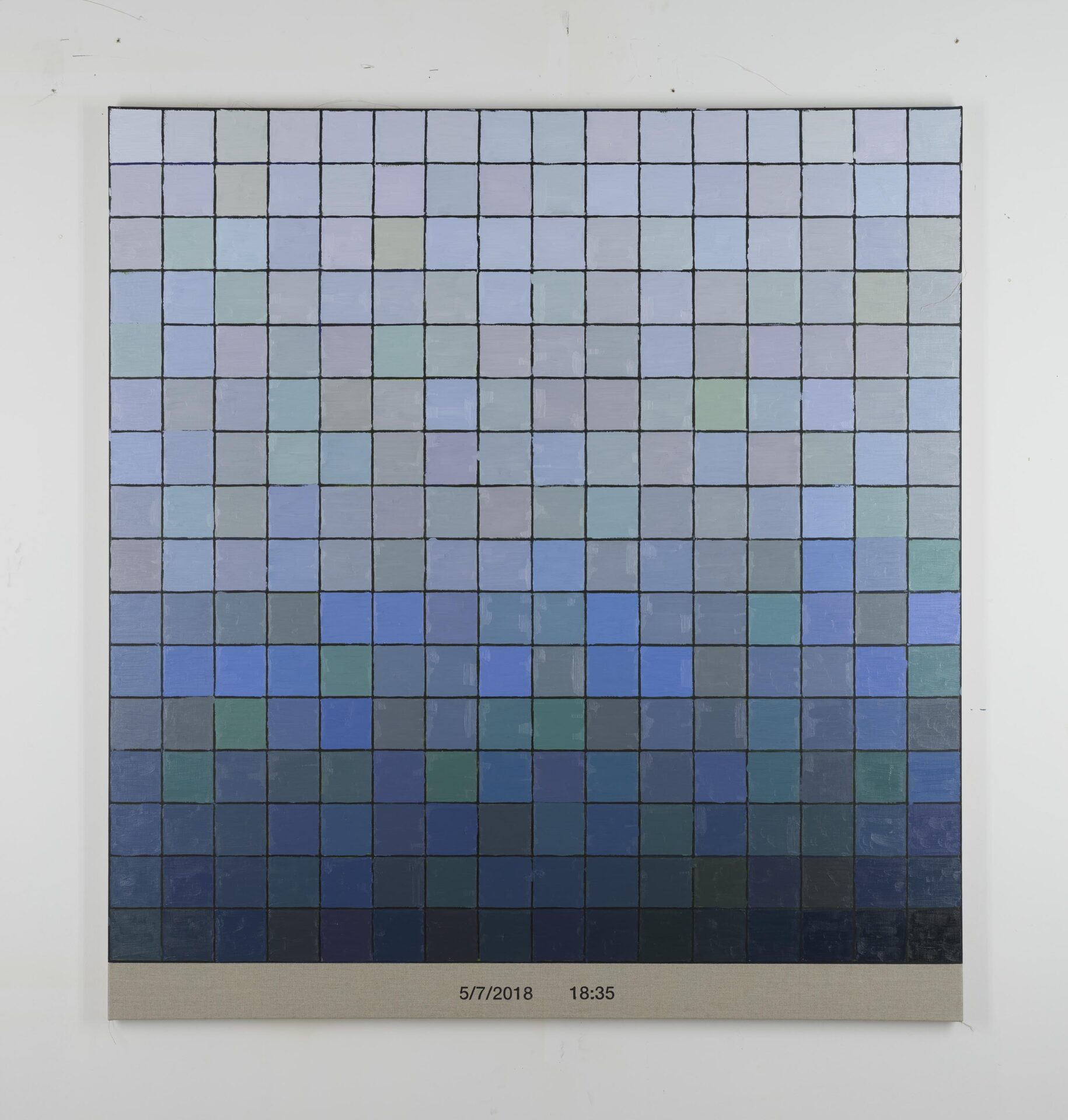



These works are composed of an image printed on canvas over which a layer of acrylic was applied to half the surface.




These works are composed of an image printed on canvas over which a layer of acrylic was applied to half the surface.



This work is based on an existing 1933 painting by M. Rakowski. A Polish painter who lived in Brussels. After a trip to his homeland, he made a series of paintings as souvenirs. I’ve bought the original painting (oil on panel) at a flea market in Couvin. For me, this work is a souvenir of the 10 years I’ve lived in Wallonia. The pasty painting was molded and a replica of it cast in bronze that I’ve patinated until the image became visible again.


















The monochrome works always play with the reflection of light. By applying several layers of varnish or by using a spotlight to light up a part of the surface, rudimentary landscapes become visible, a horizon emerges and the surface evolves depending on the viewer’s angle of view.










In these A3-size works, a photographic image is split up into the image (in black and white) and the colours.
The colours present in the snapshot are listed from light to dark within a grid of 16×16 squares. Because the light colours end up at the top of this mathematical, computer-controlled list, many of these works create the illusion of a horizon and an abstracted landscape. The colours are reproduced on top of the print in oil paint.
The first series of six works came about when cole, prompted by the question: Who are you? travelled to the Mont Ventoux and from the summit took several photographs of the surrounding landscape.








In these works, an image is divided into image and colour. The image is drawn, the colours placed on top within a grid of 16×16 squares, listing them from light to dark. A rudimentary two-part collage emerges.


























In the “Colorscape” paintings, the same process is always applied: the colours from a photograph are ordered from light to dark within a grid of 16×16 squares. Because the light colours end up at the top of this mathematical, computer-controlled list, many of these works create the illusion of a horizon and an abstracted landscape. The colours are reproduced in oil paint. Every time Cole reverts to this process, however, a different concept is worked out. For the El Camino exhibition, he went to Finistère (France) to photograph a sunset in three directions, and then to Fisterra (Spain) to do the same. This resulted in two triptychs / altarpieces that depict the unknown from the mainland. In another series, by analogy with the Calais series by Marthe Wéry, he painted 17 paintings based on 17 snapshots of the sea taken from the pier in Calais. The dimensions were derived from those used by Wéry; both series were shown interchangeably in BPS22. Two paintings were hung on the scene of the baroque theatre of the Chimay castle, one in the first scene and another, slightly smaller, in the second. The closest depicted the front part of a landscape, the other the back part…